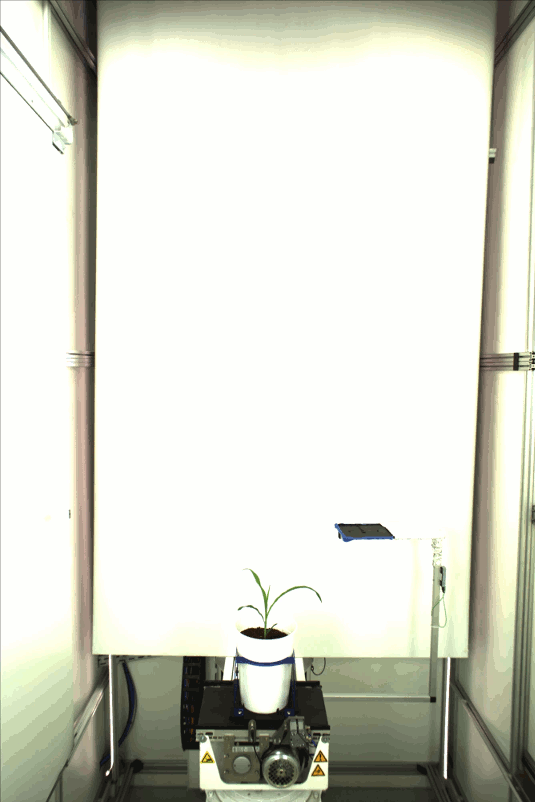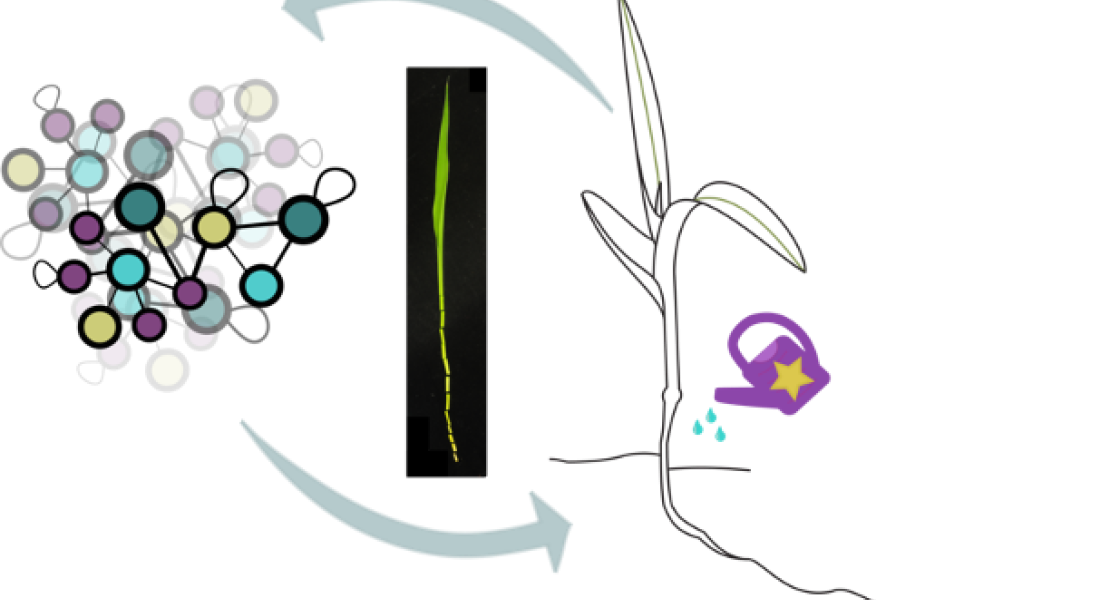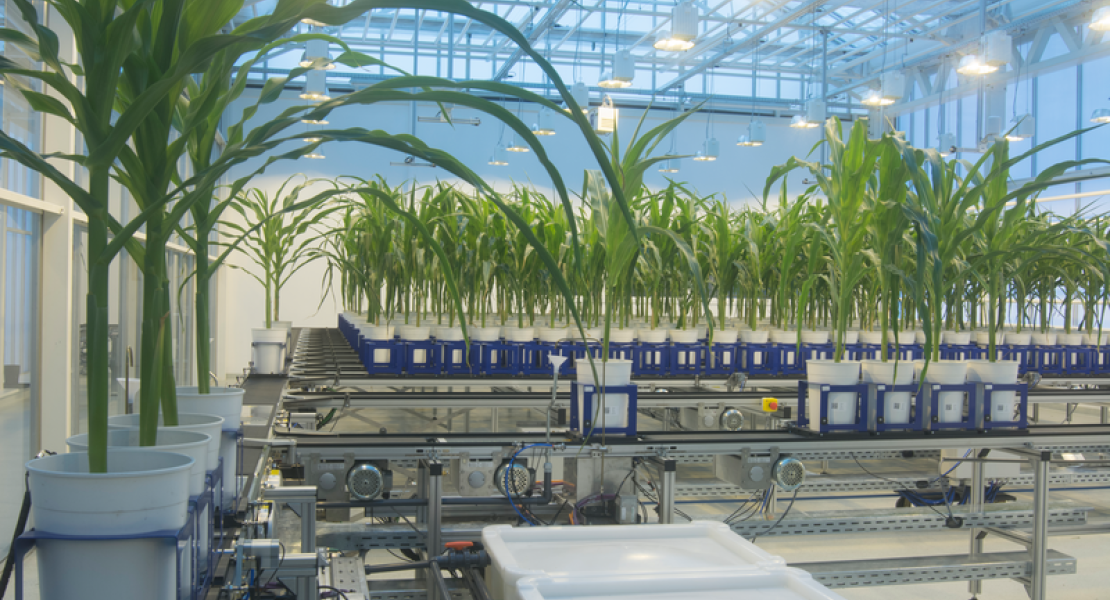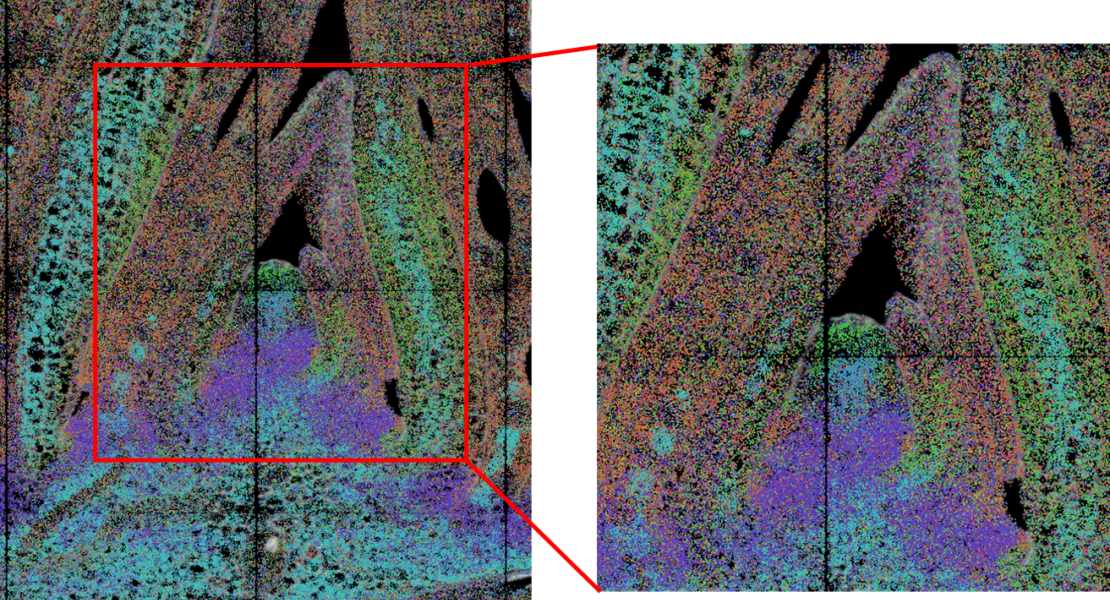The size control of multicellular organisms is an old biological question that has always fascinated scientists. At present, the question is still far from being solved because cell division and cell expansion, two distinct events necessary for the formation of a mature organ, are very complex and interrelated. Our long-term goal is therefore to decipher the molecular pathways that determine plant organ size.
Growth regulation is highly coordinated within a plant organ, but also between organs. In the maize leaf, cell division and cell expansion are organized linearly, with cells dividing at the base of the leaf. As more cells are produced, the cells gradually begin to elongate until they reach their mature cell size. When the growth of one leaf slows down, the next leaf begins to grow rapidly. Similarly, after the predominant leaf growth in seedlings, the internodes begin to grow and eventually the reproductive organs. The tightly controlled, repetitive growth cycles throughout the plant's life are critical to plant architecture and various aspects of yield.
 Growth processes are not only highly coordinated during development, but plants also adapt their growth when they perceive unfavourable environmental conditions, so understanding growth regulation is also important with regard to the need for climate-compatible crops. In mild drought, the growth rate of organs is reduced, but the growth period is extended
Growth processes are not only highly coordinated during development, but plants also adapt their growth when they perceive unfavourable environmental conditions, so understanding growth regulation is also important with regard to the need for climate-compatible crops. In mild drought, the growth rate of organs is reduced, but the growth period is extended
To facilitate the different irrigation regimes required for drought studies and to increase the resolution and sensitivity of phenotyping, we use the automated irrigation and imaging platforms for plant phenotyping, called Phenovision. The Phenovision platform is equipped with three camera systems that enable the three-dimensional reconstruction of plants, the measurement of growth-related phenotypic characteristics, water consumption and plant physiology. With Phenovision we investigate distinct aspects of drought stress, from early signalling in drought perception to adaptive growth responses and molecular and cellular adaptations in rewatering.
We combine physiological (growth analyses in mutants or natural variants) and molecular analyses (e.g. transcript and metabolite profiling, protein-protein interactions, multiplex genome editing, single cell approaches) to investigate the mode of action of growth-promoting genes and to identify new potential growth regulators. We have identified and studied several growth-promoting genes and are now further investigating their function as well as their targets and/or interacting proteins to expand the growth regulatory network. While much research is being done on individual genes that influence leaf size, we are investigating the connections between the various molecular players of the different processes that drive leaf growth to build an integrated growth regulatory network. To increase the effectiveness in finding complex gene combinations that influence maize growth, our team is collaborating with the Innovative Breeding team to combine "classical" breeding with multiplex genome editing of yield-related genes.
Maize plants with improved growth characteristics are tested in field trials. Unfortunately, the knowledge gained in the laboratory cannot easily be transferred to the field. To better understand this translation gap, our team is looking at the differences between greenhouse-grown and field-grown plants aiming to modulate the network in a tailored manner rather than constitutively disrupting it. We use spatial transcriptomic approaches to understand the topology of the network and formulate cell type-specific modulations to achieve better growth.


